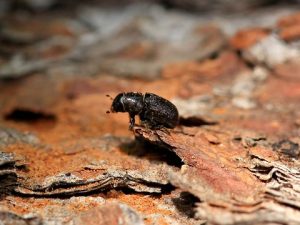Introduction
In the intricate tapestry of our forests, a silent dialogue unfolds, one that has long captivated the minds of scientists and nature enthusiasts alike. This dialogue is between the mighty bark beetles and the subtle orchestrators of the forest – fungi. Join us on a journey into this hidden world as we unravel the mysteries of fungal signaling in bark beetle infestations. Dr. Monica G. Turner, a distinguished landscape ecologist, will be your guide, shedding light on how these interactions shape our forests and influence the ever-evolving landscape.
Meet Dr. Monica G. Turner
Before we delve into the fascinating world of fungal signaling, let’s get acquainted with the expert who will be our companion on this journey.
Dr. Monica G. Turner is a prominent figure in the field of landscape ecology. Her expertise revolves around understanding forest and landscape dynamics, with a keen focus on disturbances and climate change. With a Ph.D. in Ecology, she has dedicated her career to unraveling the secrets hidden within our natural landscapes. Dr. Turner’s insights are founded on years of dedicated research, making her the ideal guide to explore the intricacies of fungal signaling in bark beetle infestations.

The Forest’s Silent Communicators: Fungi
Forests, though often viewed as serene and unchanging, are dynamic ecosystems. They are in a constant state of flux, responding to a multitude of factors, including climate change and disturbances. Among these disturbances, bark beetle infestations have gained notoriety for their devastating impact on forests.
But there’s more to this story than meets the eye. Fungi, often overshadowed by charismatic species like the bark beetles, play a crucial role in this narrative. They engage in a silent dialogue with the beetles, and it’s a conversation we are just beginning to understand.
Fungal Signaling: The Cryptic Code
Imagine fungi as nature’s cryptographers. When bark beetles attack a tree, they bore through its defenses, creating wounds. Fungi, in response, move in, not as invaders, but as mediators. They release chemical signals that beckon other fungi to join them. These fungi then engage in a complex dance of chemical communication.
In our table below, we break down the key points of fungal signaling:
Fungal Signaling in Bark Beetle Infestations
| Aspect | Description |
|---|---|
| Initiation of signaling | Bark beetle attack on a tree |
| Primary signaling molecule | Volatile organic compounds (VOCs) |
| Signaling purpose | Attracting other fungi |
| Fungal species involved | A diverse community of fungi |
| Result | Formation of a fungal “communication network” |
The Forest’s Response
Understanding fungal signaling sheds light on how forests respond to bark beetle infestations. The formation of a fungal network can influence the tree’s ability to defend itself, affecting the overall health of the forest. It’s a delicate balance where fungi can either aid the tree’s resilience or hasten its decline.
Climate Change: A Complicating Factor
Dr. Turner’s expertise in landscape dynamics extends to the realm of climate change. As the world grapples with shifting climates, forests face new challenges. The interplay between fungal signaling and climate change adds another layer of complexity to this intricate narrative.
Concluding Thoughts
In the grand tapestry of our forests, fungal signaling in bark beetle infestations is a chapter of subtle yet profound importance. Thanks to the expertise of Dr. Monica G. Turner, we’ve been granted a glimpse into this captivating world. As we navigate the ever-changing landscape of our planet, it is essential to appreciate the delicate balance of nature, where even the tiniest organisms can hold the key to the forest’s future.
We hope this exploration has deepened your understanding of the silent dialogue between fungi and bark beetles, a conversation that continues to shape our forests in ways we are only beginning to comprehend.
In Dr. Turner’s Words
Before we bid adieu, let’s hear directly from Dr. Monica G. Turner about her fascination with this field:
“The world beneath our feet is as rich and dynamic as the world above. Fungal signaling in bark beetle infestations is just one example of the intricate dance of nature. By understanding these processes, we gain insight into the resilience of our forests and the impact of climate change. It’s a journey that continually inspires my work.”




